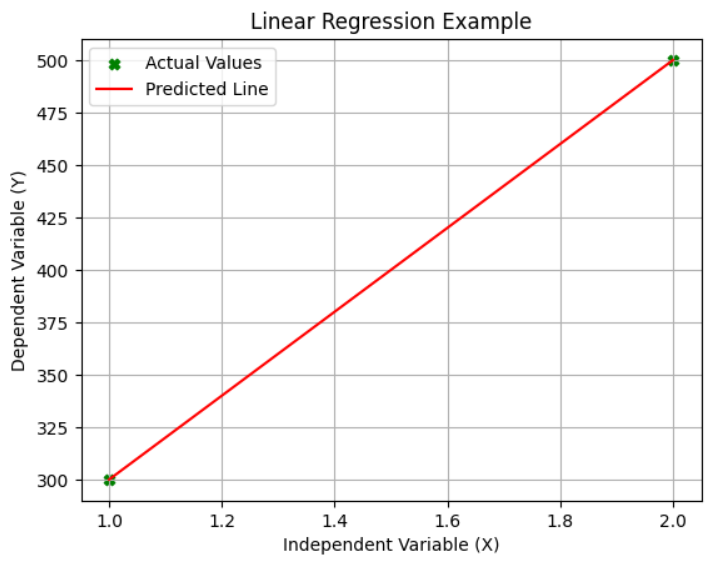Easy NumPy Beginner Guide
Published:
A Beginner’s Guide to Numpy: Unlocking the Power of Python for Data Science
Introduction
In the world of data science and machine learning, Numpy stands as one of the foundational libraries in Python. Short for Numerical Python, Numpy provides powerful tools to handle large, multi-dimensional arrays and matrices. It also includes a collection of mathematical functions to perform operations on these data structures efficiently. If you’re new to Numpy, this guide will walk you through its basics, giving you a strong foundation for more advanced data analysis tasks.
A Brief History of Numpy
Numpy was created by Travis Oliphant in 2006 by combining the features of two earlier libraries: Numeric and Numarray. The goal was to unify these libraries into a more powerful and comprehensive tool for scientific computing in Python. Over the years, Numpy has grown into one of the most widely used libraries in the Python ecosystem, providing the foundation for more specialized tools like Pandas, Scikit-learn, and TensorFlow. Its open-source nature and active community have driven continuous improvements and optimizations.
Why Use Numpy?
Before diving into how to use Numpy, let’s look at why it’s so popular:
- Performance: Numpy arrays are more efficient than Python lists, both in terms of memory usage and computation speed.
- Convenience: It provides an extensive suite of functions for mathematical, statistical, and linear algebra operations.
- Interoperability: Numpy works seamlessly with other libraries like Pandas, Matplotlib, and Scikit-learn.
Installing Numpy
To start using Numpy, you first need to install it. You can do this using pip:
pip install numpy
Once installed, import it into your Python environment:
import numpy as np
The as np is a common alias that makes the code cleaner and easier to read.
Core Concepts and Basic Operations
1. Creating Numpy Arrays
The fundamental object in Numpy is the ndarray (n-dimensional array). Let’s look at how to create one:
import numpy as np
# Creating a 1D array
arr1 = np.array([1, 2, 3, 4, 5])
# Creating a 2D array
arr2 = np.array([[1, 2, 3], [4, 5, 6]])
print(arr1)
print(arr2)
Output:
[1 2 3 4 5]
[[1 2 3]
[4 5 6]]
2. Array Attributes
Numpy arrays come with several useful attributes:
print(arr2.shape) # Output: (2, 3)
print(arr2.ndim) # Output: 2
print(arr2.size) # Output: 6
shapegives the dimensions of the array.ndimreturns the number of dimensions.sizeshows the total number of elements.
3. Array Operations
Numpy makes element-wise operations simple:
arr = np.array([10, 20, 30])
# Adding a scalar
print(arr + 5) # Output: [15 25 35]
# Element-wise multiplication
print(arr * 2) # Output: [20 40 60]
4. Matrix Operations
Matrix manipulation is a core feature of Numpy:
A = np.array([[1, 2], [3, 4]])
B = np.array([[5, 6], [7, 8]])
# Matrix addition
print(A + B)
# Matrix multiplication
print(np.dot(A, B))
5. Dot Product and Distributive Property
The dot product is a key operation in linear algebra, used frequently in machine learning and data analysis:
vec1 = np.array([1, 2, 3])
vec2 = np.array([4, 5, 6])
# Dot product
dot_product = np.dot(vec1, vec2)
print(dot_product) # Output: 32
Explanation: The dot product of [1, 2, 3] and [4, 5, 6] is computed as:
(1*4) + (2*5) + (3*6) = 32
Numpy also adheres to distributive properties:
A = np.array([1, 2, 3])
B = np.array([4, 5, 6])
C = np.array([7, 8, 9])
# Distributive property
left = np.dot(A, B + C)
right = np.dot(A, B) + np.dot(A, C)
print(left == right) # Output: True
This shows that A · (B + C) = A · B + A · C, confirming the distributive nature of the dot product.
6. Slicing and Indexing
Accessing specific elements, rows, or columns is straightforward:
arr = np.array([10, 20, 30, 40, 50])
print(arr[1:4]) # Output: [20 30 40]
In a 2D array:
arr2 = np.array([[1, 2, 3], [4, 5, 6]])
print(arr2[1, 2]) # Output: 6
print(arr2[:, 1]) # Output: [2 5]
NumPy Basics: Arrays and Vectorized Computation
One of the core strengths of Numpy is its support for vectorized computation, which allows you to perform operations on entire arrays without using explicit loops. This makes your code more concise and efficient.
1. Vectorized Arithmetic Operations
Numpy allows arithmetic operations to be applied directly to arrays:
arr = np.array([1, 2, 3, 4])
# Vectorized addition
print(arr + 10) # Output: [11 12 13 14]
# Vectorized multiplication
print(arr * 3) # Output: [ 3 6 9 12]
These operations are significantly faster than looping through elements using standard Python lists.
2. Element-wise Operations with Two Arrays
arr1 = np.array([1, 2, 3])
arr2 = np.array([4, 5, 6])
# Addition
print(arr1 + arr2) # Output: [5 7 9]
# Multiplication
print(arr1 * arr2) # Output: [ 4 10 18]
3. Mathematical Functions
Numpy provides a suite of functions for mathematical computations:
arr = np.array([0, np.pi/2, np.pi])
print(np.sin(arr)) # Output: [0. 1. 0.]
print(np.exp(arr)) # Exponential function
print(np.sqrt(arr)) # Square root (note: sqrt(0) = 0)
Common Numpy Functions
- Generating Arrays:
np.zeros((3, 3))– Creates a 3x3 array of zeros.np.ones((2, 4))– Creates a 2x4 array of ones.np.linspace(0, 10, 5)– Generates five equally spaced values between 0 and 10.
- Statistical Functions:
np.mean(arr)– Computes the mean.np.std(arr)– Computes the standard deviation.np.sum(arr)– Computes the sum of array elements.
- Random Numbers:
np.random.rand(3, 3)– Generates a 3x3 matrix with random numbers between 0 and 1.np.random.randint(1, 100, size=(2, 3))– Generates a 2x3 matrix of random integers between 1 and 99.
Conclusion
Numpy is a powerful and indispensable tool for anyone working with numerical data in Python. Mastering its core features will help you build efficient, scalable solutions for data analysis, machine learning, and beyond. Vectorized computation is one of its key strengths, making complex calculations straightforward and efficient. As you advance, you’ll discover even more sophisticated operations that can be performed with Numpy. Happy coding!

